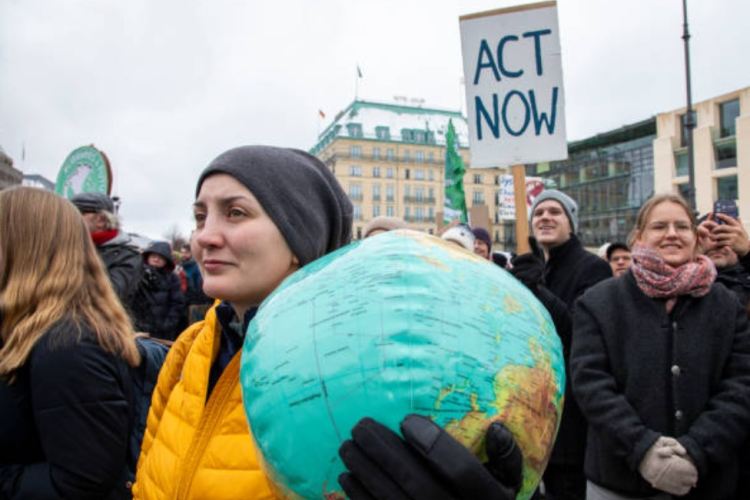
Bridging eco-gender gap: Participation of women in environmental protection is not a new phenomenon; it is deeply rooted in cultural and historical narratives. Across civilizations, women have been revered as nurturers and closely intertwined with nature. From the personification of Mother Earth in Greek mythology to Parvati, the divine consort of Lord Shiva in Hinduism, the association between women and the environment has been longstanding.
Today, this connection extends beyond symbolism. Women are emerging as key stakeholders in climate action — not merely as guardians of tradition but as active leaders responding to the ongoing crisis. Their engagement is not solely a matter of cultural continuity but a necessity driven by social and economic realities. Structural inequalities, resource dependencies, and the disproportionate burden of climate change have positioned women at the forefront of environmental advocacy. Their role is no longer just a reflection of past narratives but a defining force in shaping sustainable and resilient futures.
READ | Trump’s stand on Paris Agreement reshapes US global agenda
Risk perception and climate vulnerability
Risk perception is another key driver of the eco-gender gap. Research from the University of Michigan found that while women view environmental degradation as a direct and personal risk, men are more likely to downplay these threats or see them as distant future concerns (Davidson & Freudenburg, 1996). The study also suggests that women perceive environmental threats—such as climate change, pollution, and biodiversity loss—as more immediate and severe compared to men.
But the consequences of environmental collapse go far beyond perception. The grim reality is that women bear the brunt of climate disasters not just economically but socially and physically. The United Nations Population Fund (UNFPA) reported a surge in sex trafficking following cyclones and typhoons in the Asia-Pacific region. Similarly, the UNDP has documented rising cases of domestic violence and sexual abuse during droughts in Uganda. Whether in Pakistan after devastating floods or in Bangladesh following cyclones, women face heightened vulnerability as nature unravels.
Economic and social impact of climate change
Natural disasters are not just ecological crises; they are economic disasters that disproportionately impact women. In regions where food and water scarcity drive desperation, families are forced to make impossible choices. When survival becomes a daily struggle, young girls often become collateral damage, forced into child marriages as a means of economic relief.
Additionally, women tend to score higher on traits such as empathy and altruism, which are closely linked to pro-environmental behaviours. A study by Arnocky & Stroink (2011) found that individuals with higher empathy levels were more likely to engage in sustainable practices. Since women, on average, exhibit stronger empathic tendencies than men, they are more inclined to prioritise environmental concerns.
Women have demonstrated a greater commitment to climate action than men, with higher participation in recycling, water conservation, and energy reduction at home. A 2018 UK study by Mintel found that female Brits were significantly more likely to adopt these sustainable practices compared to their male counterparts. Additionally, 71% of women, compared to only 59% of men, actively tried to live ethically. Research consistently finds that women express greater concern about climate change, strongly believe in its reality, and report a heightened perception of vulnerability to its effects.
Eco-gender gap in environmental action
Men have shown hesitation in carrying reusable shopping bags, recycling, or engaging in environmentally friendly activities when these behaviours are perceived as feminine. Research by Brough et al. (2016) found that this reluctance stems from a fear of being seen as effeminate. This concept also extends to dietary choices, with men being significantly less likely to adopt vegetarian or vegan diets compared to women. Surveys estimate that 70-80% of vegetarians are female, highlighting a gendered perception of sustainable lifestyles. Similarly, a 2016 study found that men may actively avoid or even oppose green behaviours as a way to reinforce their gender identity (Swim et al., 2016).
To counteract this trend, sustainability campaigns in India must focus on making environmental responsibility gender-neutral. For instance, framing eco-friendly behaviours as acts of leadership, innovation, and economic growth—rather than as moral obligations—may encourage greater male participation.
Addressing eco-gender gap through policy
Closing the eco-gender gap requires systemic efforts at multiple levels. India’s climate response is fragmented despite gender-focused policies. The national climate policy does not contain a gender-responsive climate finance strategy. The burden of climate distress is not evenly distributed, with Dalit and Adivasi women, along with other historically marginalised groups, bearing the brunt due to pre-existing socio-economic vulnerabilities and limited access to resources.
Policy initiatives should ensure women’s participation in environmental decision-making processes while also encouraging men to engage in sustainability. A 2023 report by NITI Aayog emphasised the importance of integrating gender perspectives into India’s climate adaptation policies, highlighting the need for gender-responsive budgeting for environmental programmes.
Moreover, businesses and marketing campaigns should frame sustainability as a shared responsibility. Gender-inclusive messaging that appeals to diverse audiences—rather than reinforcing stereotypes—can lead to more widespread environmental engagement. Initiatives like the Women in Sustainability (WiS) programme by the Council on Energy, Environment, and Water (CEEW) exemplify this approach by not only promoting gender diversity in the workplace but also strengthening women’s roles in research, implementation, and leadership. By creating enabling work environments and encouraging affirmative action through strategic collaborations, such efforts highlight the value of inclusivity in driving effective and equitable sustainability policies.
The eco-gender gap is no longer just an academic topic — it is a stark reality shaping the lives of millions. As climate change accelerates, the burden on women continues to grow, reinforcing the urgent need for gender – sensitive climate policies and action. The fight for the planet is, at its core, a fight for the rights and safety of women worldwide.
